Bolivia is located in the central area of South America, has the highest administrative capital in the world at La Paz, with an altitude of 3630 m.a.s.l. and as constitutional capital to Sucre. Megadiverse country, which has different geographical spaces such as the Andes, the Altiplano, the Amazon, the Moxos Plains and the Chaco; pluricultural state since in its territory ancient civilizations such as Tiwanaku, the Hydraulic Culture of the Lomas, the Moxeña culture, the Aymara Nation that survives until today, the Incas and later the Spanish conquerors dominated the territory until the country became independent in 1825. Among its most important cities are: La Paz, Cochabamba, Santa Cruz de la Sierra, Sucre, Oruro, Imperial Village of Potosí, Tarija, El Alto and Uyuni.
It is one of the highest capitals in the world, the city center is in a deep and wide canyon formed by the La Paz or Choqueyapu River, about 1,400 feet (3650 m.a.s.l.). Cable car: It is currently distributed in 10 lines linking the cities of the city of La Paz and El Alto, with excellent views of the city with snowy mountains, considered the longest, most modern and highest cable car in the world.
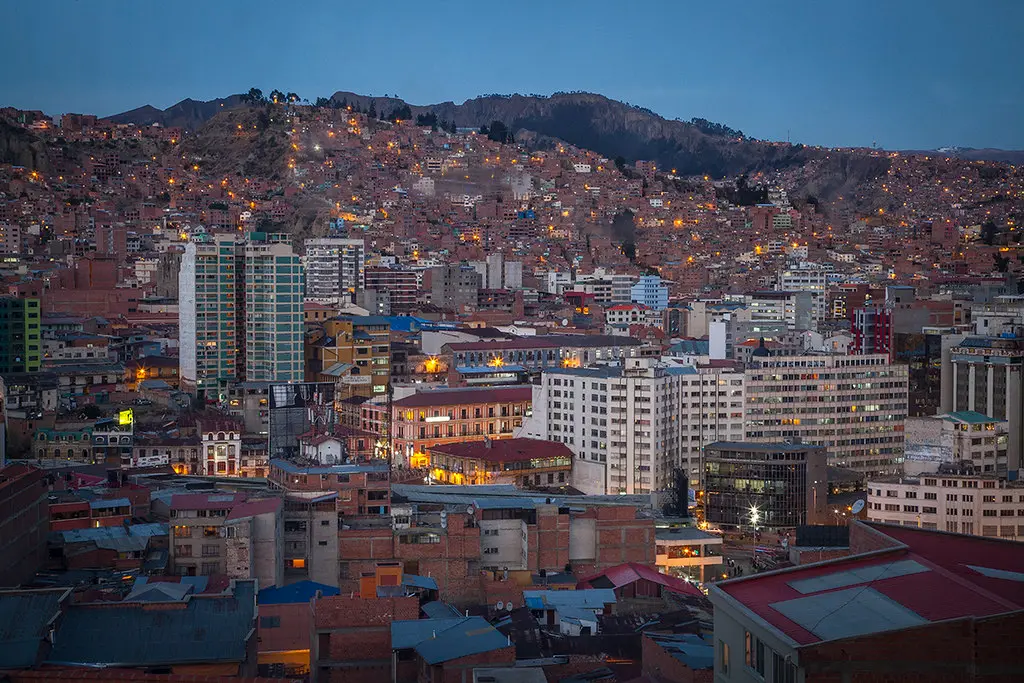

In the town of Uyuni is the Train Cemetery. During the time of Spanish rule, the mining industry became very important and train lines were built to transport the minerals throughout the territory. One of the most important was the one that united Uyuni with Antofagasta. With the passing of the years, the trains that arrived until the Station of Uyuni stopped transiting and their popularity was being in the past. Today you can see nineteenth-century wagons forgotten on the sand, becoming a must-see attraction.
Uyuni salt flat has an area of 12,000 thousand square kilometers, with a depth of 300 meters. The weather is cool and sometimes cold, it is worth enjoying this unique opportunity to see how the sun radiates the immense salt field and lights the sky with unique colors. Located in the southwest of Bolivia in the town of Potosí, being the largest lithium reserve in the world with 50-70% of the world’s lithium, it also has significant amounts of potassium, boron and magnesium; It is also the largest continuous and high salt desert in the world, with an area of 10,582 km² (or 4085 square miles). Surrounded by mountains, volcanoes, rock formations, geysers and red lagoons is one of the unforgettable experiences you can live in Bolivia.
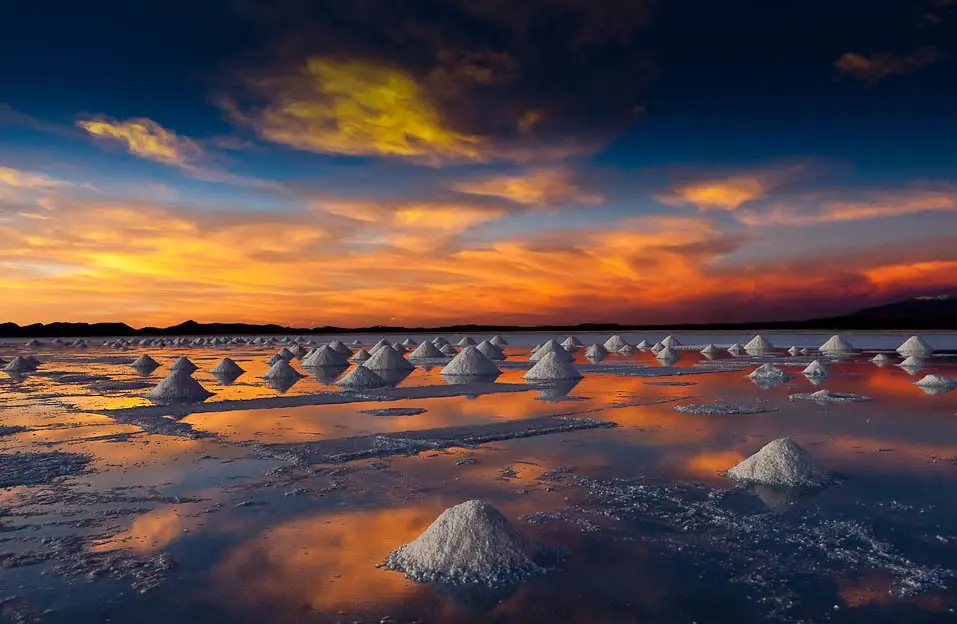
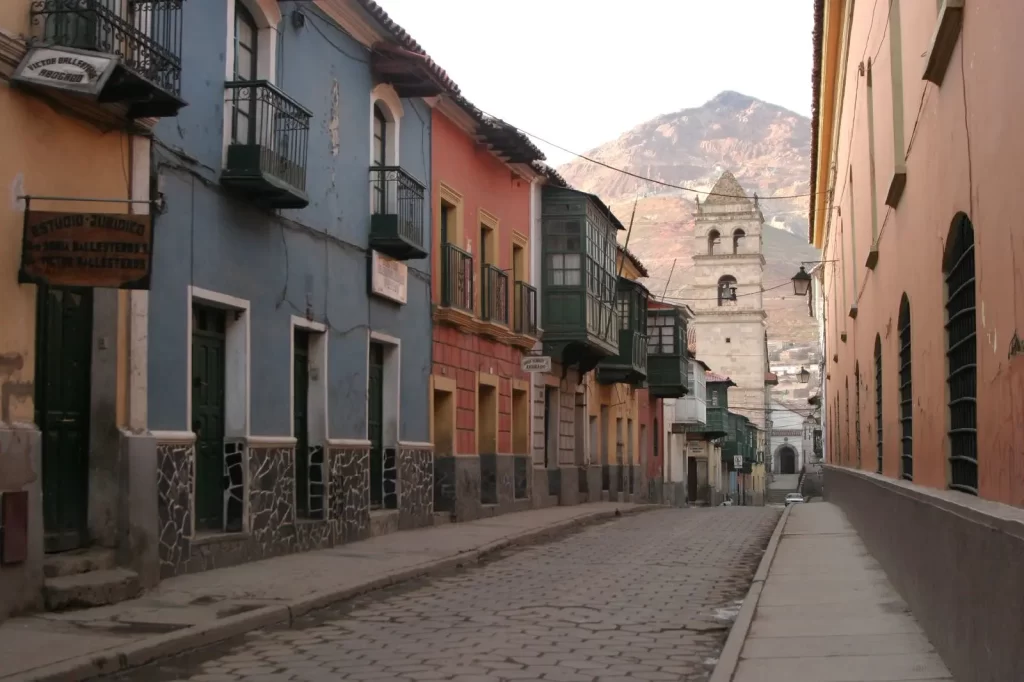
Declared by the UNESCO Cultural Heritage of Humanity in 1987, it was known as the Imperial Villa at the time of the colony, it is characterized by its baroque architecture with its beautiful churches, monasteries, temples, palaces, mansions, narrow and picturesque streets. The imposing Cerro Cerro Rico is a silver mine south of the city, it is a true reflection of the mining history of the area. Among its architectural heritage there are numerous colonial buildings such as the Potosí Cathedral, in the Gothic style; the Mint, built between 1757 and 1773, which preserves important colonial archives and constitutes one of the most prominent civil buildings in Latin America, as well as the Tomás Frías University. In the Church of San Francisco, as in the Church of San Lorenzo, you can see a great artistic exhibition inside, with the inclusion of indigenous deities and symbols of Christianity.
The ToroToro National Park, is a protected area of Bolivia, located in the province of Charcas, in the north of the department of Potosí. It has an area of 16,570 ha (165,70 km²) and was created in 1989 in order to conserve the flora and fauna of the inter-Andean valleys as well as archaeological, paleontological and speleological sites. Traces of large Mesozoic reptiles and deep caves of karst origin are found. There is the vast cavern of Huma Jalanta, the cave of Huaca Senka and others. There are also dinosaur footprints and areas with abundant fossils. And it houses the Inca ruins of Llama Chaqui and cave paintings. A particular attraction is the impressive Toro Toro Valley Canyon. The altitudinal range ranges between 3,600 and 1,900 m.a.s.l.
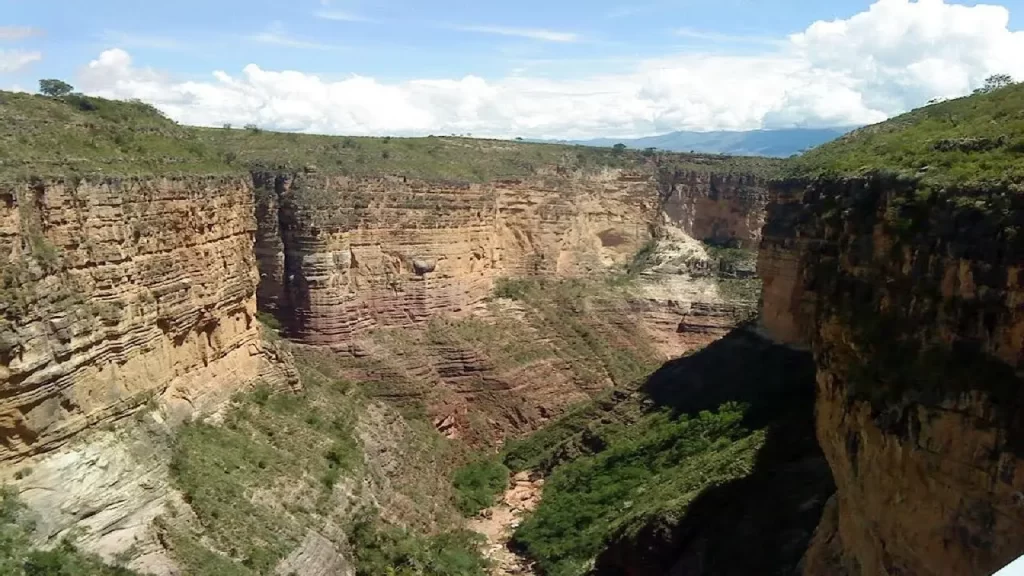
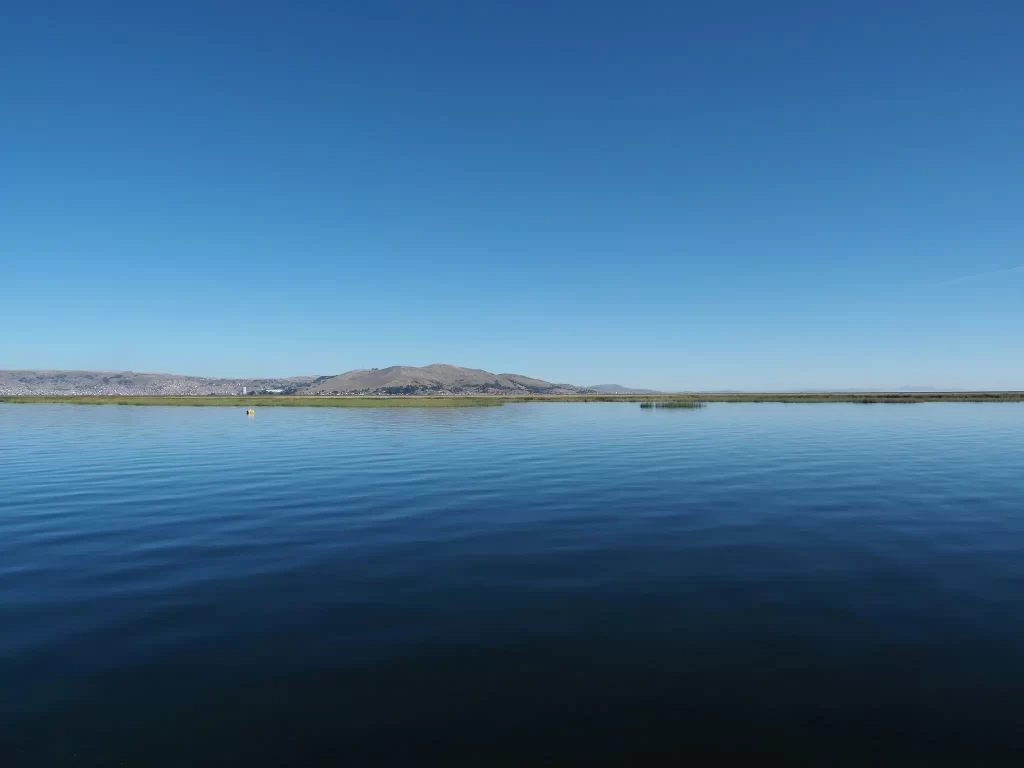
Located in the Andean highlands, at an average altitude of 3812 m. a. s. l. occupying the territories of Peru and Bolivia, it has an area of 8562 km² of which 56% (4772 km²) correspond to Peru and 44% (3790 km²) to Bolivia and 1125 km of coastline; Its maximum depth is estimated at 281 m, it is one of the largest lakes in South America and the highest navigable body of water in the world, considered the cradle of the Incas and has several ruins.
Cal Orcko (from the Quechua voice Cal Urqu, ‘Cerro de Cal’) is a paleontological site in Bolivia, found in the quarry of a cement factory, near the city of Sucre, in the department of Chuquisaca. It is the site with the most important dinosaur footprints in the world, as it contains more than 5,000 footprints of 294 dinosaur species. The discovery is a huge contribution to history and science, which reveals data not known until now about the end of the Cretaceous period and the beginning of the Tertiary, about 66 million years ago, thus documenting the high diversity of dinosaurs better than any other site in the world. Until its discovery, the largest and most important site was Khjoda-Pil-ata, in Turkmenistan, and others in Portugal, Britain, Spain and Switzerland. Cal Orcko, however, is several times larger than those: in other parts of the world there were only up to 220 tracks of only two species.
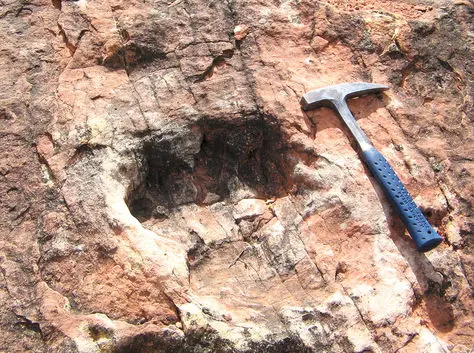
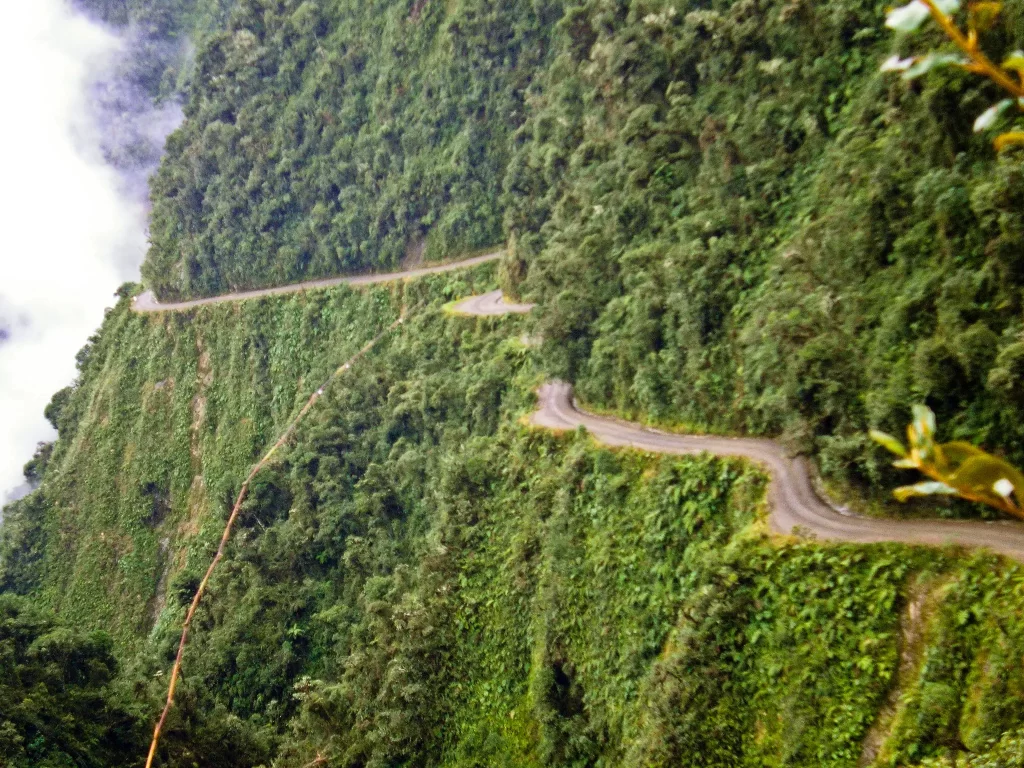
The road of Los Yungas is considered one of the most impressive and most dangerous in the world: the terrifying cliffs that mix with amazing landscapes, unites the Andes with the Bolivian jungle. It is the only road in Bolivia on which you drive on the left hand side: this is to allow the descending driver to see how close their wheels are to the edge of the road. On one side is the mountain and on the other, the precipice; an oversight could cause a catastrophe. Who descends the slope should give preference to who climbs it, another particularity of this path. In 2006 the layout of a safer and paved route was inaugurated, with better conditions than the traditional road, since then heavy traffic was reduced and the Yungas road is no longer part of Route 3, which links La Paz with the city of Trinidad, in the department of Beni. However, the dangerous section near Coroico still remains open. Many arrive there by bus or bicycle, attracted by the vertiginous slopes, the sharp curves and the incredible views, in search of extreme experiences.
Laguna Colorada is a breeding place for Andean flamingos, migratory birds that count for thousands in their mineral-rich waters. It is located within the Eduardo Abaroa Andean Fauna National Reserve, Bolivia, in the Potosino highlands. It has a maximum dimension of 10.7 km long by 9.6 km wide with an area of 54 km² and an average depth of 35 cm. It is considered a high Andean-saline lagoon, it also contains borax islands in the northeast and southeast sectors. It has a coastal perimeter of 35 kilometers.
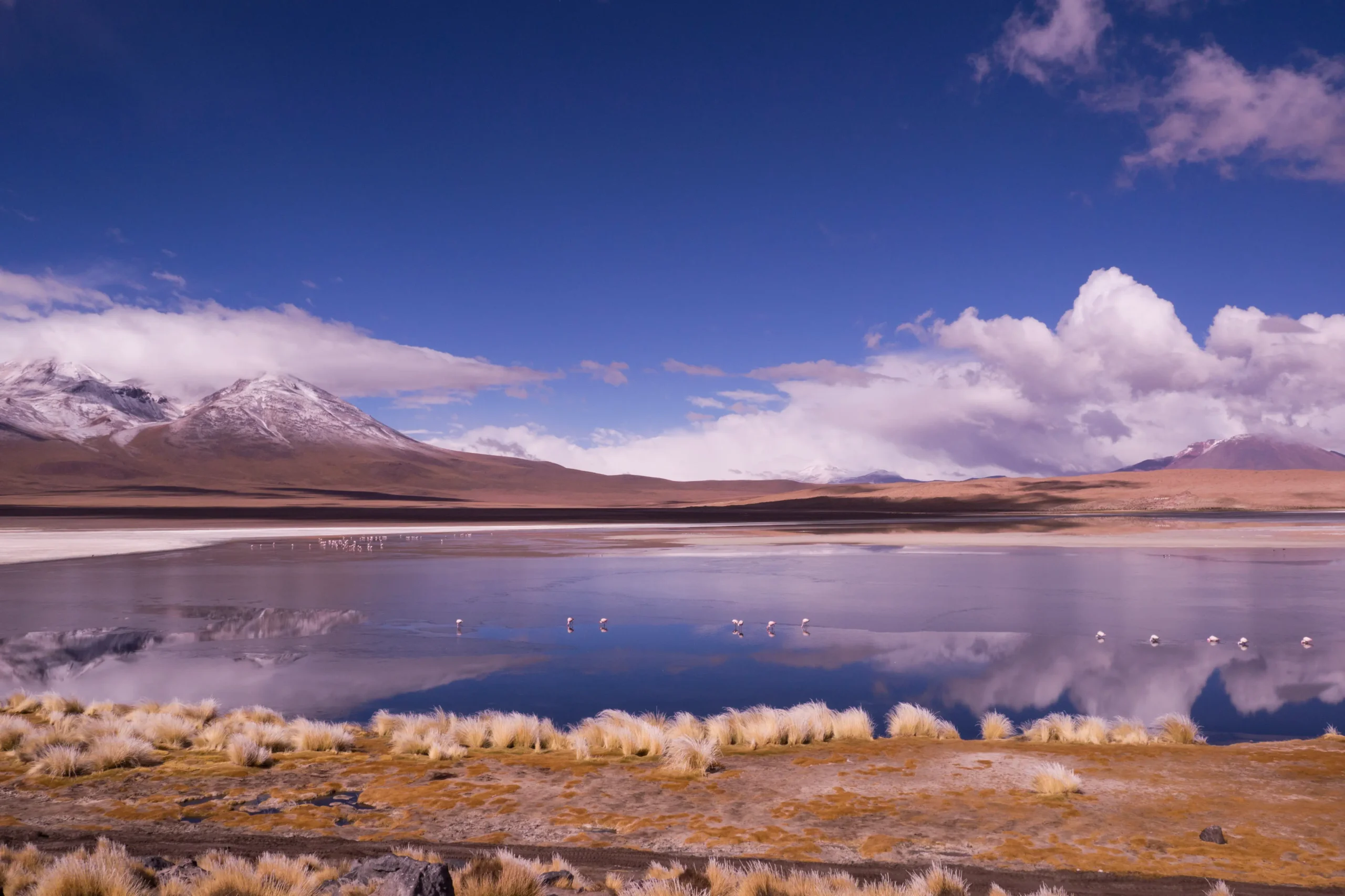
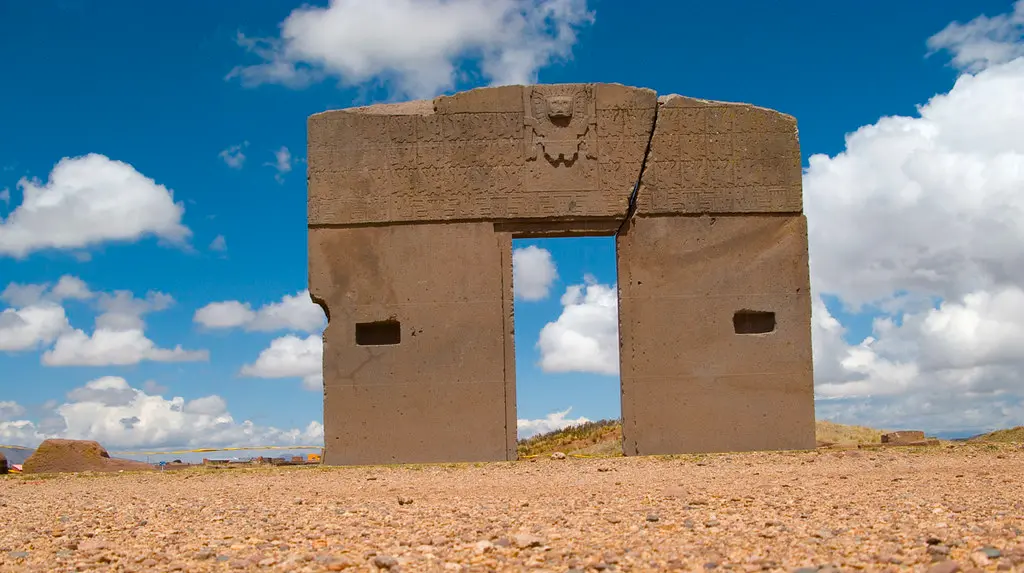
It is 72 km away. from the city of La Paz. In an area of 30 hectares, located near the southern shore of Lake Titicaca. The two closest cities to this archaeological center are La Paz (Bolivia) and Puno (Peru). The megalithic ruins of Tiwanaku (Bolivia) are one of the archaeological wonders of South America. This pre-Inca city was built around the 3rd century BC. for the tihuanacotas, becoming one of the most successful cities in the area. For reasons that are unknown, this civilization collapsed, leaving us with incredible traces of its culture that survive to this day. It presents a set of Templar remains of the Tiwanaku culture, among them the Kalasasaya temple (126 by 117 meters), inside which is the famous Puerta del Sol, the semi-underground temple with its enigmatic nail heads and the remains of Kantataita, Putuni and Kericala You can also see the pyramids of Akapana and Pumapunku (discovered only in part and currently under excavation).
The Mercado de las Brujas is a street market located in La Paz, exactly on Linares Street in the center of the city, near the Basilica of San Francisco. Among the main merchandise sold by local wizards known as Yatiris, we find: potions, dried frogs, medicinal plants such as broom, armadillos, sullus (dried fetuses of different animals) used in the rituals of the Andes. These ritual elements are usually buried under the foundations of the houses as an offering to the Pachamama. Yatiri can easily be identified by their black hats and coconut bags that contain amulets, talismans and powders that ensure luck, beauty and fertility.
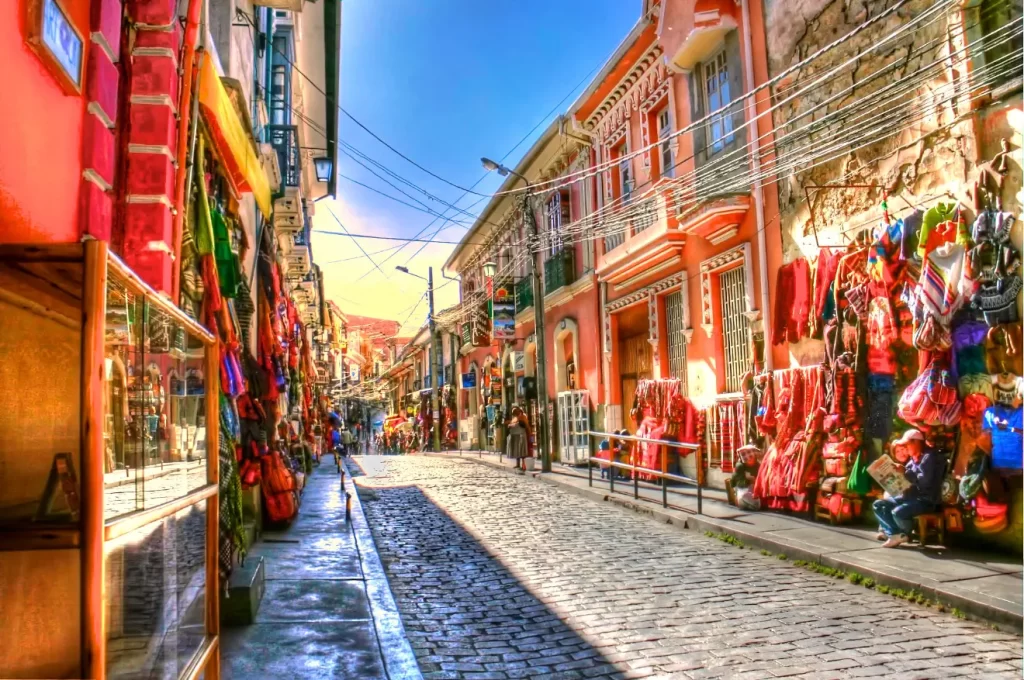
We create happiness and change lives through extraordinary, responsible travel adventures

We are a Destination Managment Company DMC in Bolivia